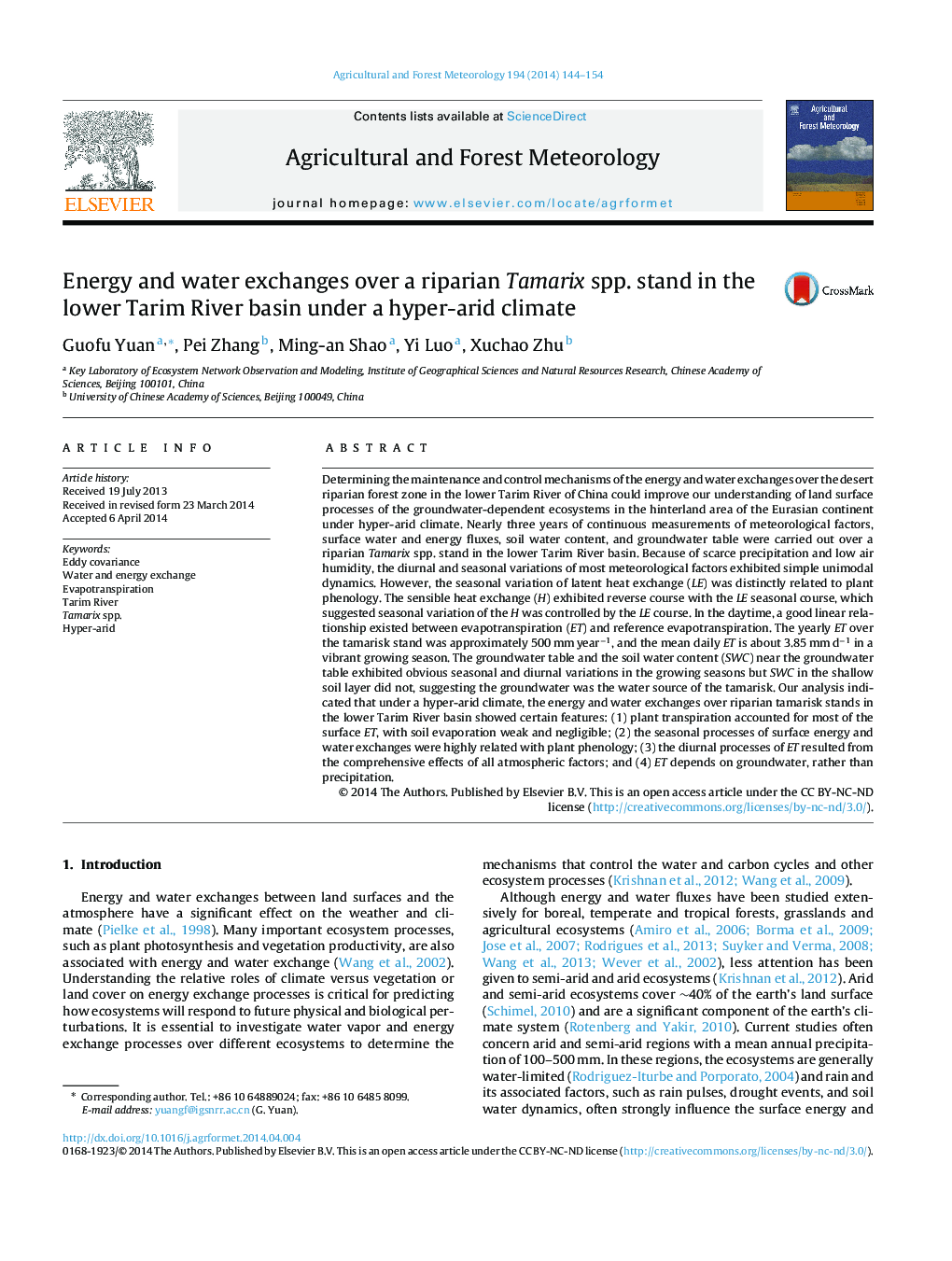| کد مقاله | کد نشریه | سال انتشار | مقاله انگلیسی | نسخه تمام متن |
|---|---|---|---|---|
| 6537577 | 158337 | 2014 | 11 صفحه PDF | دانلود رایگان |
عنوان انگلیسی مقاله ISI
Energy and water exchanges over a riparian Tamarix spp. stand in the lower Tarim River basin under a hyper-arid climate
دانلود مقاله + سفارش ترجمه
دانلود مقاله ISI انگلیسی
رایگان برای ایرانیان
کلمات کلیدی
موضوعات مرتبط
مهندسی و علوم پایه
علوم زمین و سیارات
علم هواشناسی
پیش نمایش صفحه اول مقاله

چکیده انگلیسی
Determining the maintenance and control mechanisms of the energy and water exchanges over the desert riparian forest zone in the lower Tarim River of China could improve our understanding of land surface processes of the groundwater-dependent ecosystems in the hinterland area of the Eurasian continent under hyper-arid climate. Nearly three years of continuous measurements of meteorological factors, surface water and energy fluxes, soil water content, and groundwater table were carried out over a riparian Tamarix spp. stand in the lower Tarim River basin. Because of scarce precipitation and low air humidity, the diurnal and seasonal variations of most meteorological factors exhibited simple unimodal dynamics. However, the seasonal variation of latent heat exchange (LE) was distinctly related to plant phenology. The sensible heat exchange (H) exhibited reverse course with the LE seasonal course, which suggested seasonal variation of the H was controlled by the LE course. In the daytime, a good linear relationship existed between evapotranspiration (ET) and reference evapotranspiration. The yearly ET over the tamarisk stand was approximately 500 mm yearâ1, and the mean daily ET is about 3.85 mm dâ1 in a vibrant growing season. The groundwater table and the soil water content (SWC) near the groundwater table exhibited obvious seasonal and diurnal variations in the growing seasons but SWC in the shallow soil layer did not, suggesting the groundwater was the water source of the tamarisk. Our analysis indicated that under a hyper-arid climate, the energy and water exchanges over riparian tamarisk stands in the lower Tarim River basin showed certain features: (1) plant transpiration accounted for most of the surface ET, with soil evaporation weak and negligible; (2) the seasonal processes of surface energy and water exchanges were highly related with plant phenology; (3) the diurnal processes of ET resulted from the comprehensive effects of all atmospheric factors; and (4) ET depends on groundwater, rather than precipitation.
ناشر
Database: Elsevier - ScienceDirect (ساینس دایرکت)
Journal: Agricultural and Forest Meteorology - Volume 194, 15 August 2014, Pages 144-154
Journal: Agricultural and Forest Meteorology - Volume 194, 15 August 2014, Pages 144-154
نویسندگان
Guofu Yuan, Pei Zhang, Ming-an Shao, Yi Luo, Xuchao Zhu,